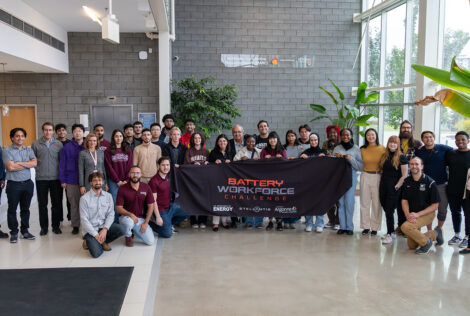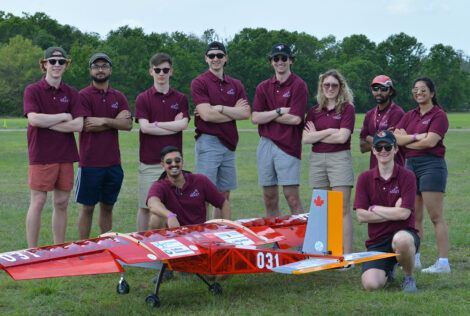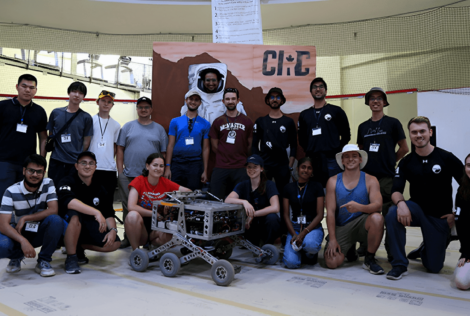
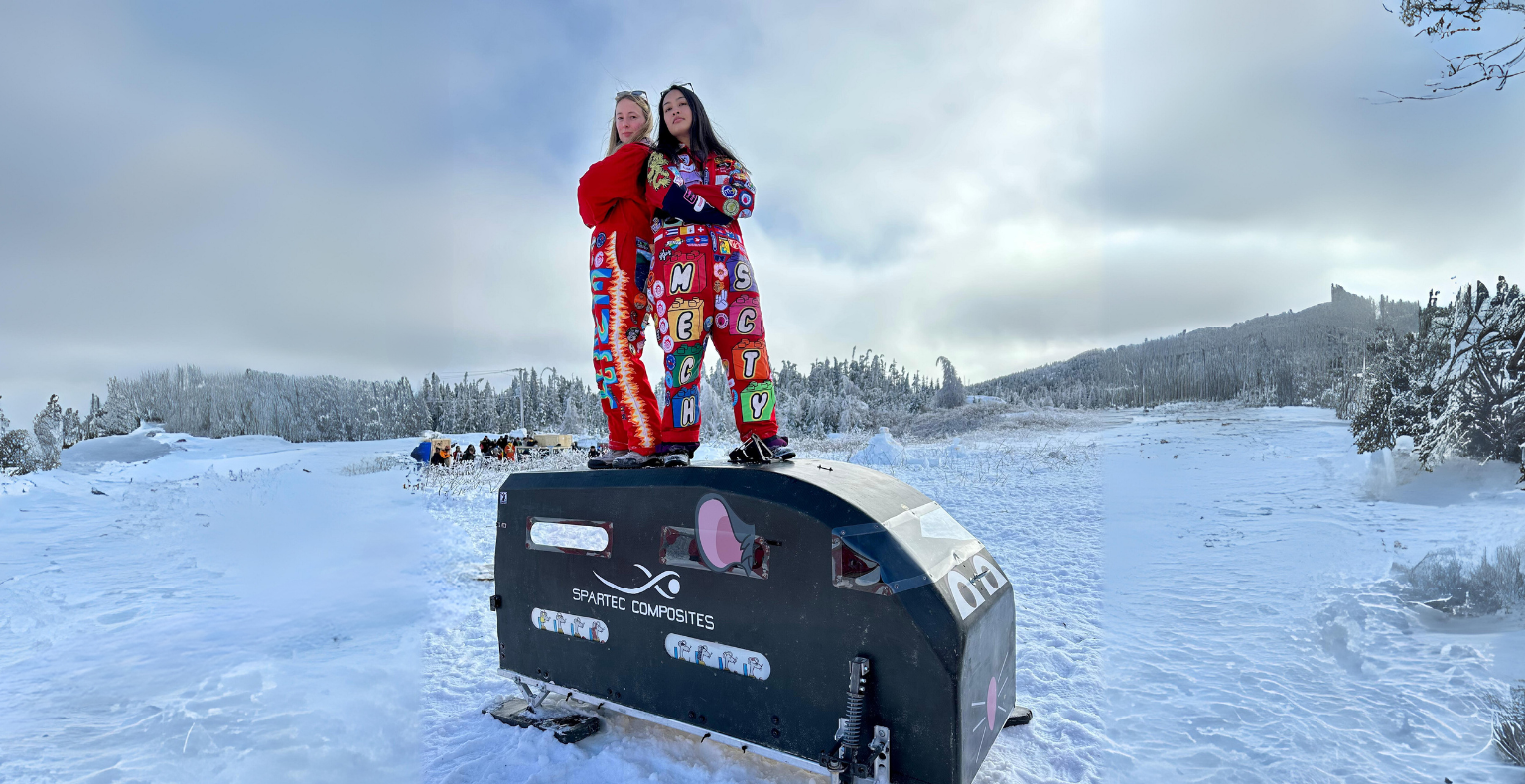
For half a century, the Great Northern Concrete Toboggan Race has united teams of engineering students eager to display their skill in design and manufacturing. The spotlight shines on their meticulously crafted concrete toboggans, hurtling down a snow-blanketed slope.
Concrete skis with fully functioning brakes, steering and a superstructure are key components of the toboggan. Responsible for the superstructure on the McMaster Engineering Concrete Toboggan Team (MECTT) are co-subcaptains, friends and Mechanical Engineering students Alisa Neang and Kristin Seymour.
Breaking from a 30-year MECTT tradition of using hometown steel for the toboggan’s cage, Neang and Seymour decided the 2023-2024 season was a time to innovate. The pandemic had stalled out their previous design plans and the competition circuit altogether. With graduation quickly approaching for both, there was no time like the present.
Despite not having worked with carbon fibre during their McMaster degrees, the duo earned the trust of their teammates to deliver on a strong, light and more aerodynamic superstructure that would hopefully translate to increased speed on the hill at a February 2024 competition in St. John’s, Newfoundland.
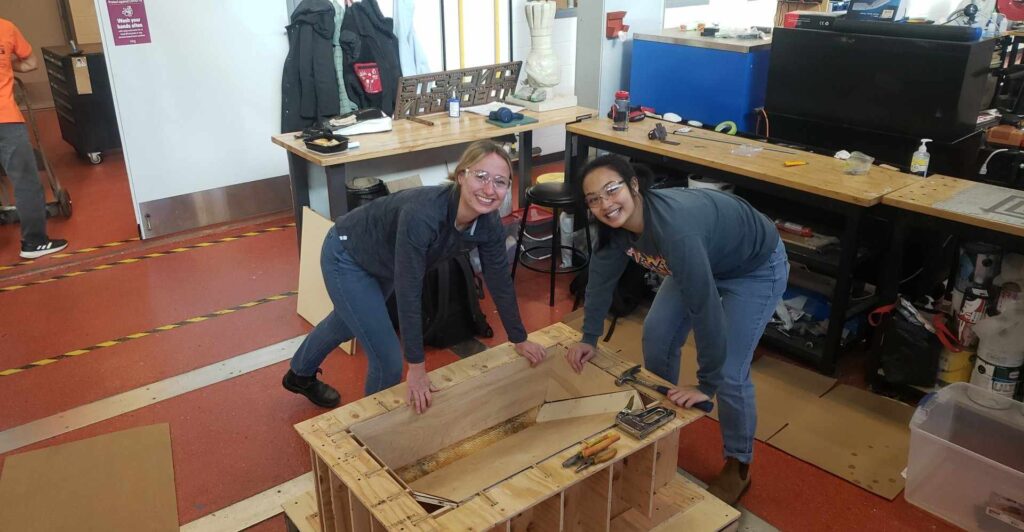
The material change was such a massive undertaking that Neang and Seymour got approval to use the project as their capstone project – a requirement for all Mac Eng undergrads in their final year of study.
Starting in June 2023, the two began their research on composite materials. They interviewed experts, designed, iterated, and designed again. “Twenty revisions later we had something planned that we felt we could build,” says Neang, who is part of the Engineering and Society program. With endorsement from their supervisor, Elizabeth Hassan, Assistant Professor in Mechanical Engineering, and Hatch Workshop Technologist Lawrence Mak, they felt well supported to begin manufacturing.
Neang and Seymour dedicated a combined 600 hours to their capstone endeavour. Although not a typical capstone experience, they agree it was tremendously valuable to their skill and knowledge development.
There wasn’t a machine in the workshop that we didn’t touch to make the toboggan structure.
Moving to a composite superstructure proved to be worthwhile. Not only did it produce a more comfortable ride in a quiet, wind-repellant enclosure, out of 16 teams MECTT was awarded 11 honours including third place for innovation, fourth best superstructure, first for team spirit and third overall placement. “It was high risk, high reward,” says Seymour.
Standing atop the superstructure they built together, the friends posed for a celebratory post-competition picture and felt a sense of relief. “The toboggan performed well, and we’re so proud that we delivered on what we set out to do,” says Neang. Seymour adds: “I couldn’t imagine tackling this challenge with anyone else. We were friends before and even closer friends after.”
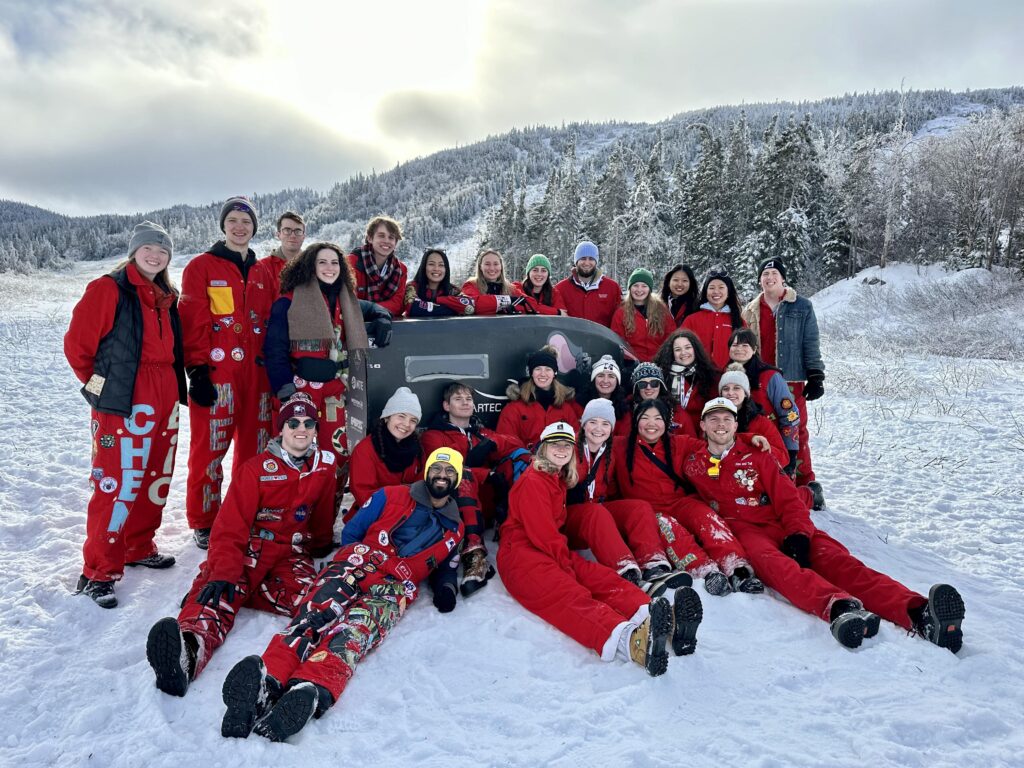
At the upcoming 2024 Capstone Showcase on campus, Neang and Seymour have another opportunity to display their work, this time to their peers and professors across departments, as well as attendees from industry and the community.
“This was the definition of a capstone project,” emphasizes Neang. “We applied so much knowledge from mechanical engineering, our co-ops and past years on the concrete toboggan team. We needed it all and more to make it happen.”
It was truly a culminating project for our Mac Eng journeys.

